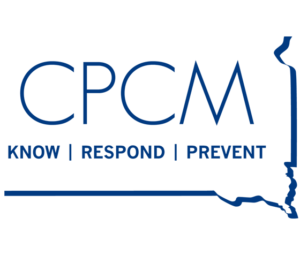Did you know?
64%
of adults have had at least one adverse childhood experience.1
1 in 7
children in the United States have experienced child abuse or neglect in the past year.2
90%
of child sexual abuse is perpetrated by someone known by the child or the child’s family.3
Positive Childhood Experiences (PCEs) are when children feel safe in their families to talk about emotions and things that are hard and feeling supported during hard times.
What are PCEs?
PCEs can include, but aren’t limited to: 4
- Feel able to talk to their family about feelings
- Feel their family stands by them during difficult times
- Enjoys participating in community traditions
- Feel a sense of belonging in high school
- Feel supported by friends
- Have at least two non-parent adults who take a genuine interest in them
- Feel safe and protected by an adult in their home
What’s the impact of PCEs?
- One study found for adults with some exposure to ACEs, individuals who reported 3-5 positive childhood experiences had 50% lower odds of adulthood depression or poor mental health when compared to those with 0-2 positive childhood experiences. 5
- Additional research has found that, when their parents were able to share ideas and talk about things that matter with their child, the child had a 12.55 times greater chance of flourishing compared to those who did not have this type of communication. 6
What can we do?
- Parents and families play a big role in children’s PCEs. This can include:
- Discuss things that matter with the child
- Participate in child’s activities
- Know your child’s friends
- Parents manage their own stress around parenting
- Friends, neighbors, and community members can promote PCEs too. This can include:
- Volunteering your time in youth serving organizations.
- Supporting community events that benefit children.
4. https://jamanetwork.com/journals/jamapediatrics/fullarticle/2749336
5. https://www.ncbi.nlm.nih.gov/pmc/articles/PMC6735495/
6. https://pubmed.ncbi.nlm.nih.gov/31059374/
Adverse Childhood Experiences (ACEs) are traumatic events experienced by a child before the age of 18. 1
What are ACEs?
ACEs can include, but aren’t limited to:
- Experiencing violence, abuse, or neglect.
- Witnessing violence in the home or community.
- Having a family member attempt or die by suicide.
- Substance use problems in the home.
- Mental health problems.
- Instability due to parental separation or household members in jail or prison.
What’s the impact of ACEs?
- 64% of adults had at least one ACE and 16% had four or more types of ACEs before age 18.1
- By preventing ACEs, up to 1.9 million heart disease cases and 21 million depression cases could have been potentially avoided.1
- Preventing ACEs could reduce suicide attempts among high school students by as much as 89%.1
What can we do?
- Learn about and champion approaches, programs, and services that align with the six strategies of preventing adverse childhood experiences:
- Strengthen economic supports to families.
- Promote social norms that protect against violence and adversity.
- Ensure a strong start for children.
- Teach skills.
- Connect youth to caring adults and activities.
- Intervene to lessen immediate and long-term harms.
- Learn more about ACEs and their impact.
- Raise awareness of ACEs to create a community conversation about how to increase protective factors and minimize risk.
- Schedule a training for your organization, employer, or community.
Child maltreatment includes physical, sexual, and emotional abuse and neglect of minors.
What is abuse and neglect?
The below examples are not a complete list of what constitutes abuse and neglect. Further definitions can be found in the South Dakota state statute at https://sdlegislature.gov/Statutes/Codified_Laws/2050730.
- Child Sexual Abuse: is any act committed against a child who was less than 18 years of age at the time of the act and includes rape and sexual contact. 8
- Physical abuse: refers to an action of an individual that is non-accidental and results in physical injuries to a child. 9
- Emotional abuse: occurs when an individual fails to provide the emotional nurturing needed for a child’s psychological growth and development. 9
- Neglect: occurs when an individual fails to provide for a child’s basic needs, like food, clothing, shelter, education, medical care, or supervision. 9
What to do if a child discloses abuse or neglect?
Do:
- Remain calm and supportive
- Listen to child & tell them you believe them.
- Reassure the child they are not to blame.
- Let them know that you will need to pass the information along in order to keep them safe and help them heal.
- Report to Child Protective Services or Law Enforcement immediately. 1-877-244-0864. If outside the hours of 8 a.m. to 5 p.m. please contact local law enforcement.
- Call 911 if a child is in immediate danger.
Do not:
- Ask leading or probing questions.
- Make assumptions.
- Make promises you can not keep.
- Discuss with others not directly involved in helping the child.
- Take any action that might undermine future investigation or disciplinary procedure, such as interviewing the alleged victim or potential witnesses, or informing the alleged perpetrator.
What’s the impact of child abuse and neglect?
- Children who are abused or neglected are at increased risk for experiencing future violence victimization and perpetration, substance abuse, sexually transmitted infections, delayed brain development, lower educational attainment, and limited employment opportunities.10
- In the United States, the total lifetime economic burden associated with child abuse and neglect was about $592 billion in 2018.10
What can we do?
- Become familiar with the signs of child abuse and neglect.
- Learn about and champion approaches, programs, and services that align with the five strategies of preventing adverse childhood experiences11:
- Strengthen economic supports to families.
- Change social norms to support parents and positive parenting.
- Provide quality care and education early in life.
- Enhance parenting skills to promote health child development.
- Intervene to lessen immediate and long-term harms.
- Take SD’s Mandatory Reporter training and CPCM’s Recognizing & Reporting Child Maltreatment to learn more about signs and the steps to report.
- Request a Mandatory Reporter training for your organization.
- Schedule a training for your organization, employer, or community.
8. https://sdlegislature.gov/Statutes/26-10-29
9. https://dss.sd.gov/childprotection/signs.aspx
10. https://www.cdc.gov/violenceprevention/childabuseandneglect/fastfact.html
11. https://www.cdc.gov/violenceprevention/childabuseandneglect/prevention.html

